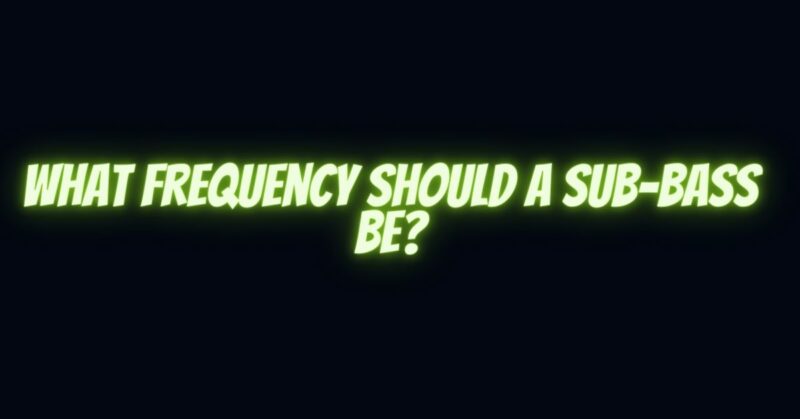Sub-bass is a frequency range that is below human hearing, typically defined as 20Hz to 60Hz. It is felt more than heard, and it can add depth and power to music.
The ideal frequency for a sub-bass will vary depending on the type of music you are playing and the sound you are trying to achieve. However, a good general rule of thumb is to have the fundamental frequency of your sub-bass between 40Hz and 60Hz. This will ensure that your sub-bass is audible on most sound systems.
If you are playing electronic music, you may want to have your sub-bass lower, such as 30Hz or 40Hz. This will give your music a more powerful and club-like sound. If you are playing rock or pop music, you may want to have your sub-bass higher, such as 50Hz or 60Hz. This will help to blend your sub-bass with the rest of the mix and make it sound more natural.
You can also use different frequencies for different sub-bass elements in your mix. For example, you may want to have one sub-bass element at 40Hz and another sub-bass element at 50Hz. This can create a more complex and interesting sound.
It is important to note that the frequency of your sub-bass will not only affect its sound, but also its sustain. A lower frequency sub-bass will have more sustain, while a higher frequency sub-bass will have less sustain.
Ultimately, the best way to find the right frequency for your sub-bass is to experiment and see what sounds best to you. However, by following the tips above, you can get a good starting point.
Here are some additional tips for using sub-bass effectively:
- Use a high-pass filter to remove any low-end frequencies from your other instruments. This will give your sub-bass more room to breathe and make it sound more powerful.
- Use a compressor to control the dynamics of your sub-bass. This will help to keep your sub-bass from overpowering the rest of the mix.
- Use an equalizer to adjust the frequency and level of your sub-bass. This will help you to achieve the desired sound.
- Be careful not to overuse sub-bass. Too much sub-bass can make your mix sound muddy and boomy.
By following these tips, you can use sub-bass to add depth, power, and excitement to your music.


